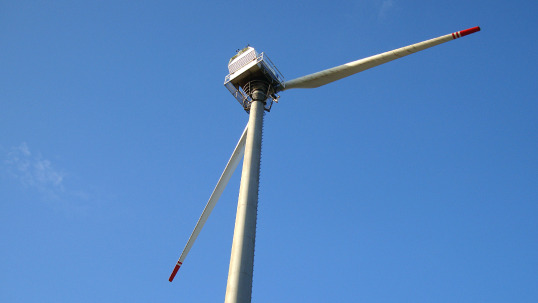11/14/2010 What happens when a turbine loses a blade? AND O, Canada--We Claim this Land for BIG WIND: Residents respond to Wind Farm Strong Arm AND What you should know before you agree to lease your land to a wind developer
CLICK HERE TO VIEW astonishing video of what is being called "the drunken windmill". What happens when a blade falls off an industrial scale wind turbine but it keeps on turning?
To get an idea of the scale of this turbine, note the height of the tree line.
Below:
Video from a public meeting in the rural Ontario towns of Fergus and Belwood where residents confront wind developers and hired PR people about a proposed project.
In the past, developers held open public meetings where they addressed the public directly. Now the approach is to hold an 'open house' --- no direct statements to the residents, but rather developers and hired PR people answer questions from residents one on one.
THIRD FEATURE:
LANDOWNERS: EDUCATION IS THE KEY TO WIND POWER BENEFITS
SOURCE: Kearney Hub, www.kearneyhub.com
November 13, 2010
By LORI POTTER
KEARNEY — There’s a steep learning curve for landowners interested in attracting wind power projects, landowner group leaders said at this week’s Nebraska Wind Power 2010 Conference in Kearney.
“You’re gonna have to have persistence to go on,” said David Vavra of the Saline County Wind Association.
Landowners from six Saline County precincts joined his group. Vavra said developers are interested in contiguous properties, so significant numbers of participants are need to support a project.
An early question for group members was: “Do we want to look at these windmills the rest of our lives and our children’s lives?”
“That can be seriously tying up your property for a long time,” Vavra said.
The most important missions are to protect landowners from unscrupulous developers and make sure that everyone understands that wind energy benefits come with issues such as construction of access roads and the work required to negotiate equitable land leases.
“You can have one developer come in and hit all the high spots. That’s checkerboarding,” Vavra explained. Or two each can tie up enough easements to prevent either from developing a project, leaving things at a standstill.
“So you go en masse, rather than getting picked off one at a time, even though that’s counterintuitive for developers,” he said, telling landowners not to believe developers who say they won’t talk to organizations.
Vavra emphasized the need to raise the money necessary to hire an attorney specializing in wind projects. “This is too important,” he said. “You’re dealing with multimillion dollar companies. They’re like a 747, and you’re like a mosquito.”
Groups should get their own wind quality data and not depend only on developers’ studies, he added.
Jim Young and other members of the Banner County Wind Energy Association organized with the knowledge of what has happed during the past 50 years of oil development in the southern Panhandle. “Some people got taken advantage of,” he said. “We wanted to form an association so we didn’t have problems like what Dave (Vavra) was talking about.”
The Banner County group has involved landowners, the county board and Panhandle Resource Conservation and Development. Leaders talked to landowners in areas where wind projects have been developed.
Initially, letters were sent to county residents and landowner meetings were scheduled at the school gym. Eventually, the Banner County group formed a limited liability corporation.
“As Sen. Nelson said, ‘You need to hit this like a full-court press,’” Young said, adding that nothing gets done if everyone is bickering. “You’ve gotta respect what everybody else is saying and work together.”
There can be hundreds of questions to answer just in the fine print of a wind contract. Vavra said the issues include insurance, liability, decommissionings or defaults, crop or other damage, payment allocations, taxes, effects on Conservation Reserve Program contracts, and audit rights.
“If you don’t know (the answers), you’re gonna get taken,” Young said.
Nebraska Farmers Union Public Affairs Director Graham Christensen said one of the first wind project contracts he saw when he started with NFU was for one payment of $1,000 for a 55-year-lease. “That is totally unacceptable,” he said.
Lincoln attorney Andy Pollock of the Nebraska Energy Export Association said, “There are different cultures in every county … so you really need to explore that as a local organization. What’s right for you?”
That means finding the right developer and determining the necessary lease terms. “You’re in the driver’s seat,” Pollock said. “You have options. …. Developers want to be here.”
It also means choosing a way to fund the local group.
Young said Banner County used $100 one-time dues. Vavra said Saline County started with a $50 minimum plus 50 cents per acre with a promise to pay back any contributor who never gets any money from a wind project or related development.
Pollock cautioned landowners that public power districts control the transportation and sale of wind energy in Nebraska.
“Don’t get any notion in your head that you can go and sell (electricity) to the ethanol plant down the road,” he said. “That’s public power’s job.”
Vavra said local leaders must put the group’s needs ahead of any personal interests. “If you’re looking at dollars, this is not a get-rich-quick scheme … this is long term,” he said.
